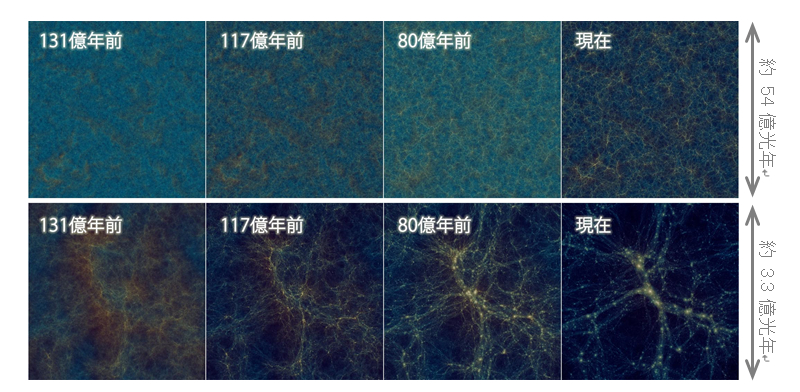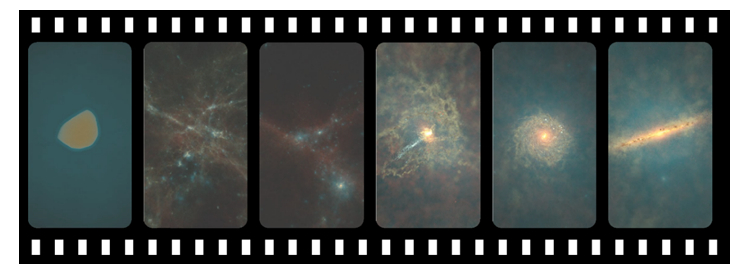Sub-project A
Sub-project A:
Revealing the Formation History of the Universe with Large-scale Simulations and Astronomical Big Data
Overview
We perform large-scale numerical simulations to reveal phenomena on different spatial and time scales, such as the formation of the structure of the universe, the birth of the first stars, the formation of galaxies, and the formation and evolution of celestial objects in the universe. From the results of these high-resolution simulations, we will provide theoretical templates that can be directly compared with observations from large-scale galaxy surveys and astronometry satellites, aiming at a comprehensive understanding of the formation and evolution of celestial objects at each level of the universe.
Objectives and methods of this project
We will generate big mock observational catalogs of galaxies from dark matter structure formation simulations and make theoretical predictions for future telescope observations, perform 6D Vlasov simulations to predict the impact of neutrinos on large-scale structure formation in the universe and its implications for observations, perform star-by-star galaxy formation simulations to elucidate the process of galaxy formation, and perform N-body simulations of real-scale dense star clusters with 1 million bodies to elucidate the formation process of compact objects and make theoretical predictions for gravitational wave observations.
Organization
The University of Tokyo, Chiba University, Tsukuba University, Kobe University, Hokkaido University, and 6 partner institutions in Japan and overseas
Research Director: Michiko Fujii (Associate Professor, Department of Astronomy, Graduate School of Science, The University of Tokyo)
 Simulation of dark matter struture formation and evolution (Ishiyama et al. 2015)
Simulation of dark matter struture formation and evolution (Ishiyama et al. 2015)

Simulation of Galaxy Formation in Cold Dark Matter
(Takayuki Saito 2019)
